- Currently Puerto Rico
- Posts
- Currently en Puerto Rico — 13 de septiembre, 2023: Calor y humedad mientras se aleja Lee
Currently en Puerto Rico — 13 de septiembre, 2023: Calor y humedad mientras se aleja Lee

Aire húmedo y vientos inusuales llevarán a tronadas
Los vientos soplarán desde el sur el miércoles, arrastrados por el huracán Lee a medida que se aleja de Puerto Rico hacia el norte. Estos vientos introducirán aire húmedo desde las latitudes tropicales por la tarde, creando un ambiente favorable para la formación de aguaceros dispersos y tronadas aisladas sobre la isla. Estos se concentrarán en el interior sur, pero una aparición más temprana de humedad en la mañana podría provocar que la actividad llegue también al norte. Los altos niveles de humedad estarán bien establecidos el jueves, lo que significa que los aguaceros serán más generalizados. Después de varios días de lluvia, serán posibles inundaciones urbanas y acumulación de agua en las carreteras. Aunque habrá muchas nubes, la humedad y los períodos de sol impulsarán los índices de calor a entre 108 y 111 grados a lo largo de la costa norte, donde estará vigente una Advertencia de Calor el miércoles. Las áreas del interior norte podrían ser aún más calurosas, potencialmente superando los 114 grados, lo suficientemente alto como para un Aviso de Calor Excesivo.
—John Toohey-Morales
What you need to know, currently.
Officials say more than 5,000 people have been killed in Libya after intense rainfall broke through dams and unleashed a torrent of water toward the coastal city of Derna on Monday.
As much as 25% of Derna (pop. 125,000) was washed away by the floods, and local responders have been absolutely overwhelmed. The UN and International Red Cross and Red Crescent Societies have mobilized to bring relief to the region.
The rainfall was caused by Storm Daniel, a “medicane” — a hurricane-like cyclonic storm that formed in the central Mediterranean Sea and also brought intense rainfall to parts of Italy, Greece, Turkey, and Egypt. Medicanes like Daniel are expected to grow stronger as the Mediterranean Sea warms due to fossil fuel-driven climate change.
Storm Daniel making its devastating landfall in Libya.
This time lapse shows Daniel's evolution over the last three days.
— CIRA (@CIRA_CSU)
6:00 PM • Sep 12, 2023
Libya has been enmeshed in civil conflict for much of the past 12 years, so some key infrastructure — like dams — have fallen into disrepair or damage. Worse, internal conflict has delayed aid shipments. Even before the floods, Derna had no functioning hospital due in part to the long-running conflict with the ruling government of western Libya.
“This is not just a natural disaster, this is a human disaster as well as a result of the neglect of the city,” Hani Shennib, president of the National Council on US Libya Relations told Al Jazeera.
Mediterranean cyclone #StormDaniel might be one of the most destructive and deadly events in recent history.
Photo from #Libya— MedCyclones (@medcyclones)
5:54 AM • Sep 12, 2023
To support the relief efforts in Libya, consider donating to the Islamic Relief fund.
What you can do, currently.
Currently Sponsorships are short messages we co-write with you to plug your org, event, or climate-friendly business with Currently subscribers. It’s a chance to boost your visibility with Currently — one of the world’s largest daily climate newsletters — and support independent climate journalism, all at the same time. Starting at just $105.
One of my favorite organizations, Mutual Aid Disaster Relief, serves as a hub of mutual aid efforts focused on climate action in emergencies — like hurricane season. Find mutual aid network near you and join, or donate to support existing networks:
